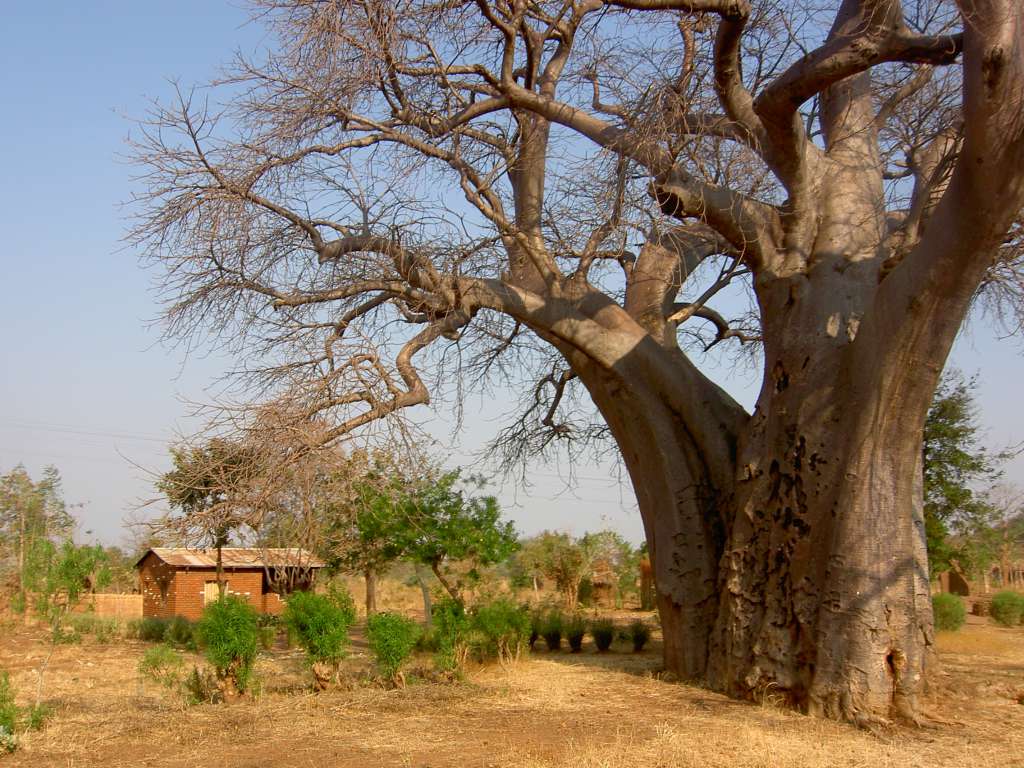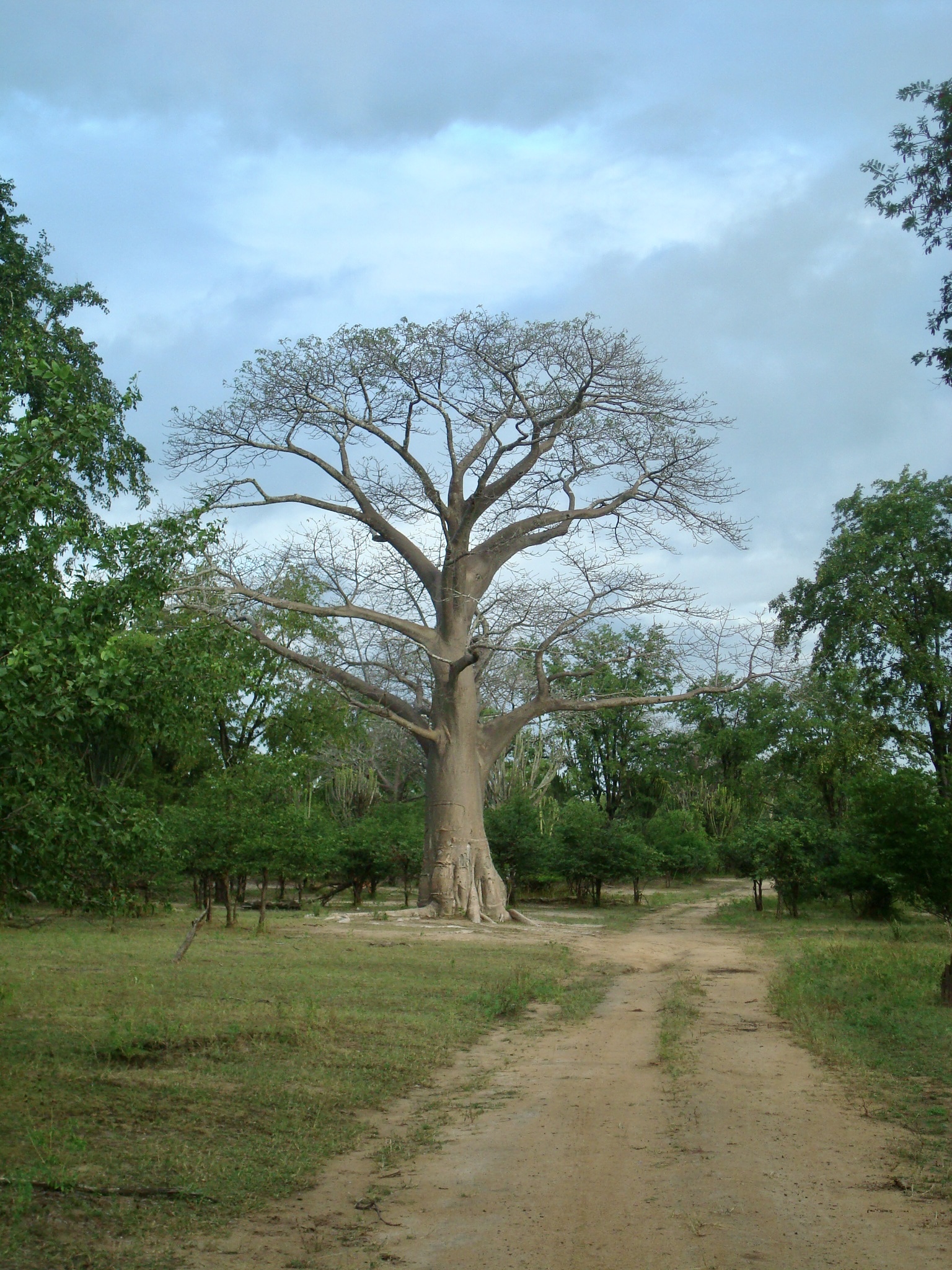Along the southern lake shore of Malawi (and in the north also) you will find the most magnificent and mysterious of trees. In the districts of Salima, Mangochi and Balaka you will discover an upside down tree that is unlike anything you have seen before! The Baobab tree is one of the great symbols of Africa. These large, imposing trees grow on the horizon and never lose their beauty and mystery as you approach them and try to comprehend their shape and size. Baobabs are the oldest of African trees, living for hundreds of years. Research has shown that these trees grow fast during their first 270 years, and then slow down. Trees with a circumference of over 30 metres could well be as much as a thousand years old.

Legend has it that God, angry with the baobab’s pride in its beauty, pulled it out and flung it back into the ground headfirst, leaving its roots exposed. WIth branches that look just like a root system it is easy to see how such a story came about. In recent times the trees were used in World War I as gun and ammunition stores, one such tree being up in Karonga in Northern Malawi.

Baobabs play a significant daily role in Malawi. During the months of May and June the fruits of the tree are harvested and sold in markets. The fruit produces seeds that can be ground down and are rich in vitamins and protein. The leaves of the tree are used to treat diarrhoea and fevers! It’s no wonder, then, why so many villages in the Shire Valley have grown around baobab trees, as they provide so much for the community. On your next visit to Malawi, stop and enjoy this most unique of trees for all its beauty and mystery, and enjoy the shade it provides on those long, hot Malawi days.
Monday Malawi Memories recaptures memories from over 20 years in Malawi. Photos won’t be in chronological order and can be on the Lilongwe Letters blog, Facebook, Instagram and Twitter. You can also find them using the hashtag #mondaymalawimemories.
Visit my Instagram page to see the collection of photos memories at www.lilongweletters.org.uk/instagram.


